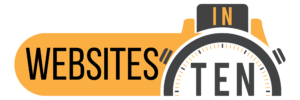What Is WordPress?
In technical terms, WordPress is a free, open source, content management system (CMS). It was developed by many contributors over many years time. In real terms, it is probably the easiest, blogging and website builder program available today. Furthermore, it works well for beginners and experienced website developers alike. Requiring no coding or coding experience, it can therefore be learned quickly and used by anyone regardless of experience level. By 2021, it was installed and used on over 40% of the Internet’s top ten million websites.
WordPress Is Made Easier by Themes and Plugins
WordPress is written in the PHP programming language. Paired with the MySQL or MariaDB database in the background, it is made easy through themes and plugins. It is installed on most hosts and ready to be installed on users’ websites using easy, one-click installers. Themes allow users to customize the general look for a website and enter content in a “template” format. In addition, plugins developed by third parties allow users to customize the function of a website to fit almost any need.
Posts and Pages
Websites created with WordPress center around posts and pages. Blogs use posts for articles, and related links and images organized by date and categories. Posts also give users the ability to accept and post comments from users. As a result, many blog sites are made up of only these blog posts and related content organized by WordPress by date and topic. Also, since WordPress handles the organization of posts, they are user friendly and easy for a new blogger. Finally there are many WordPress themes for bloggers. Themes control the structure, as well as the look and feel of the blog site.
Pages display the content of a website. Pages contain almost any type of content that a user may need. This includes text, images, links, video, icons, forms, and custom menus. As a result pages built in WordPress stand alone and need to be connected through links and menus created by the page creator. In addition, the structure, look, and content of the page are controlled by the page developer using WordPress, plugins, and their formatting capabilities. The content you are reading right now is a page on the website, websitesinten.com. In addition, all of the internal links on the page link to other pages that make up the website.
Websites often use both posts and pages to deliver content. A website could have a blogging area that organizes articles by date and topic while also having pages to display content, forms, and other information.
Many Large Companies Use WordPress for Their Websites
Because it is flexible and easy to use, while at the same time very powerful, many top companies use WordPress as the platform of choice for their Websites. Therefore, companies like Disney, Airbnb use it for their content. News organizations like Time, CBS and NBC also us it. WordPress websites can do business and e-commerce, education and learning, portfolios, forums, membership, and events. Again, the page you are reading is part of a bigger website created entirely with WordPress. In addition, all of these websites are secure, flexible, and easy to use and update. Finally, they are able to make use of custom menus, media libraries, and are mobile-friendly.

Much of the Power Comes From Third-party Plugins
While WordPress alone is a platform capable of building and maintaining a blog or website, it is third-party plugins that give it real power. There are plugins available for free download, with the click of a button, that can do almost anything that a website needs. Popular plugins can simplify the page building process by adding drag and drop capabilities. Other plugins can analyze the website to make the site more visible to search engines and add analytics to a website. Plugins provide e-commerce capabilities and the ability to accept payment. If there is something that a website needs to do, there is probably a plugin that can do it!
Plugins can be downloaded from the WordPress dashboard with a single click and installed with another click. Sometimes a few configuration settings need to be made and the plugin becomes a part of WordPress and is ready to use. If you’re curious about all the things plugins can do, perform a search for WordPress plugins to see what all is available.
The Process of Starting a WordPress Website Is Easy and Straightforward
To build a WordPress website, start by getting a domain name that represents your website. Registrars sell domain names to end users like you and me. Many of these registrars are also companies who provide web hosting as a sort of one-stop shopping for setting up a website. A host provides space for storing the website content and the connection to the Internet and is the next step in the process. You will need a host that has WordPress installed and ready for installation on your website.
For example, I get paid a commission if you click a link on this page and sign up for a domain and hosting by one such company, Bluehost. This website is hosted by Bluehost who also acts as the domain registrar for websitesinten.com and other domain names that I own. There are hundreds of these registrar/hosts available on the Internet that provide comparable services. Once a domain and hosting is obtained, install WordPress with a single click and the site is ready to build. Want to see how I built this website? Check out the videos in the Building a Website Series.
Setting up a website will require a domain name and hosting which can often be handled by the same domain registrar and hosting company for a relatively low cost. Installing WordPress will complete the process and the website will be ready for themes, plugins, posts, and pages.


